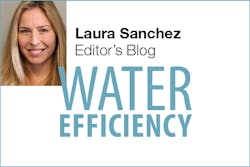Using a chlorine isotope as a chemical tracer, scientists are able to determine when water fell to earth as precipitation. Researchers from the University of Delaware have recently discovered that groundwater in some Egyptian aquifers may be about 200,000 years old.
According to a recent ScienceDaily article, most of the water used by Egypt’s inhabitants comes from the Nile River, with only 7% from groundwater sources. However, in an effort to alleviate water stress in the area and augment agricultural sources, Egyptian officials are planning to begin extracting and utilizing more groundwater. University of Delaware researchers Mahmoud Sherif and Neil Sturchio have initiated a groundwater age study in order to gain a comprehensive understanding of the area’s hydrology.
Chlorine-36, an isotope produced in the atmosphere through the interaction of cosmic rays and argon atoms, falls as precipitation to the earth’s surface, where groundwater recharge carries it underground. Scientists evaluate its age by measuring the decay of Chlorine-36.
The researchers collected 29 samples from wells, expecting to find relatively young water in the shallow aquifers. Instead they found water dating back 200,000 years, which reveals that older water from the Nubian Aquifer bubbles up along faults in the rocks and mixes with younger water. This discovery will support the country’s water planning and strategic groundwater management. It was published in the journal Earth and Planetary Science Letters.
“The young groundwater that comes down as rain and takes about 50 to 100 years to flow to the Nile is being used for irrigation in some places. But some of the water they’re pumping out comes from the much older groundwater in aquifer underneath,” Sturchio explained. “You really want to know how much of that water you can pump out before you’re over-pumping it and using it up too fast. You don’t want to pump it out faster than it can replenish itself, ideally. Knowing the groundwater age is part of the basis for developing a good strategy for using it.”
What are your impressions? Has your organization made an effort to study its groundwater systems in order to better manage them?
